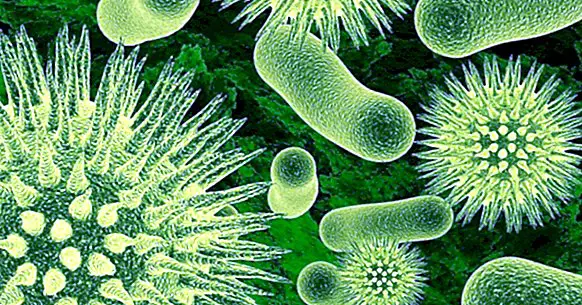The 5 types of viruses, and how they work
When talking about living beings, no kind of discussion is generated by indicating that an animal or a plant is. The same happens with fungi, algae and bacteria. But when you get to the viruses, the thing changes . And it is that these infectious agents break with the rules.
First, they are not cells, but rather simple protein structures, but they contain genetic material inside. Second, the only way to reproduce is through the infection of cells, to use their tools for this purpose. And third, they do not need to obtain any kind of energy, since they do not require maintenance.
Outside of the discussion of considering them living beings or not, there is a variety of both their content and their structures, which has made it possible to identify different types of viruses . The importance of knowing them better has to do with their role as causes of diseases in living beings, some more serious than others. Better knowledge helps in the prevention and treatment of these.
- Related article: "Types of major cells of the human body"
Basic structure of a virus
Viruses stand out on anything because they are very simple in composition. It is a protein structure, with more or less complexity depending on the class, which aims to protect the genetic material that transports , at the same time that it acts as a vehicle of it.
Capsid
The main structure that all viruses have is the capsid. Formed by a set of protein units called capsomeres , when inside it keeps the genetic content it changes to be called nucleocapsid. The form adopted by this piece is one of the criteria for identifying types of viruses.
The nucleocapsid can present an icosahedral symmetry , which is observed as a spherical shape; a helical symmetry, which is rod-shaped or tubular; and complex symmetry, apart from the nucleocapsid, has a protein structure that is called as a whole, which acts as a support to facilitate the insertion of the content in a host.
Envelope
Independent of this, some viruses can have a second layer, called the envelope, which is configured by lipids. Their presence or absence is another criterion used to classify them.
Types of viruses according to their genetic material
Unlike cells, the genetic content of these infectious agents is the most varied in classes and configurations, so it is a good point to use in taxonomy. Roughly, There are two major types of viruses : those that contain DNA as a genetic material and those that store their information in the form of RNA.
DNA virus
The types of DNA viruses have a small chain of nucleic acids which can be either single-stranded or double-stranded, that is, in a chain or in two. In addition, it can be in a circular or linear, it all depends on which virus we are talking about. They are the most common viruses to find. For example, the cause of herpes (Herpesviridae) has genetic content that is in the form of linear double-stranded DNA.
RNA virus
As you can already imagine, the only difference between the RNA viruses and the others is in the nucleic acids. The same thing happens: it can be formed by one or two chains, and be in linear or circular form. A familiar example is the retrovirus family (Retroviridae), among the diseases that can cause this AIDS. In this case, it presents its genetic material in the form of linear single-stranded RNA.
- Related article: "Differences between DNA and RNA"
According to what they infect
Not all types of viruses have an affinity for the same organisms or cells. In other words, some viruses only affect animals and not plants . Thanks to this, it can be used as a criterion for its classification. In this case, it focuses on your host, having three groups:
- Animal viruses
- Plant viruses
- Bacteriophage virus (they attack bacteria)
How do they work?
I could not finish this article without explaining how viruses work in a generic way. The virón (mature form of the virus), locates a host cell, managing to introduce its genetic content in its interior. This material is inserted into the DNA of the nucleus, so the cell can transcribe its information and translate it into proteins that configure the capsid and others. It is also possible to replicate the genes of the virus, in order to introduce it into the new capsids and form new virons that leave the infected cell.
This is a generic way of talking about the life cycle of viruses; there are many variables.Examples cited as retroviruses, first have to transcribe their content in RNA to DNA and manufacture the complementary chain before they can be inserted, since the cells contain their genetic material in the form of double-stranded DNA.
The cause of viruses generating diseases is due to this insertion in the cell's DNA, which can translocate genes, in addition to allow them to take control of the cell for its proliferation, making it not work correctly.



















